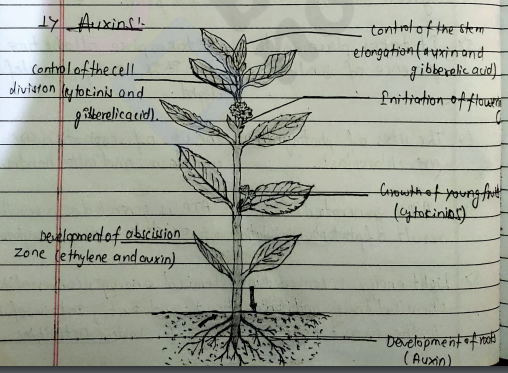Gibberellins (GA)
Gribberellins are the plant hormones that regulate the various developmental
process, including stem elongation, germination, dormancy, flowering, flower
development as well as the leaf and the fruit senescence.
It was first deceted
in 1920s by jepanese plnt pathologyists yabuta and sumiki (1938) from a fungus
(Gibberella fuiikon).
It is also called as a fungal hormone
Types of gibbrellins (GA)
Following the extensive studies it is noticed that there are at least six types of
gibberellins which are called as GA₁,CA₂,GA₃,GA₄,GA₇,GA₉.Till now more than 100
different typoes of gibberllins have been isolated .
Functions of Gibberellins (GA)
1. Stem elongation
Gibberelling brings about the stem elongation on by enlargement of the cells.
They induce the rapid cell division and the cell elongation.
2. Bolting in rosette plants
The plank like cabbages have a number of leaves around the shoot apex and reduced
internodal length giving it a rosette appearance. When such plants are treated
with gibberelling, dwart stems converted into the tall plant
3. Leaf expansion
In many plants the leaves become broader and elongated when treated with
gibberelic acid. The expantion of the leaves increases the photerysthetic area.
4. Breaking of dormancy
Gibberellins break dormancy of the buds and the seeds.
5. Parthenocarpy
Gibberelling have been consider to be more effective then Auxins for inducing
parthenocarpy in fruits like apple, tomato and pear.
6. Sexexpression
In plants like cab curcurbits and Cannabis, gibberellin treatment induces the
forme Hon of male flowers on in more place of femal flowers.
7. Reversal of dwarfism
Gibberdlins also play a very important sole in the elongation of the genetic
dwarf (mutant). varieties of plants like corn and pea.
8. Flowering
Application of GA, to many non-vemalized osette plants cause bolting and
subsequent flowering. Its application promotes the flowering the long day plant
under the unfavourable short day conditions.
